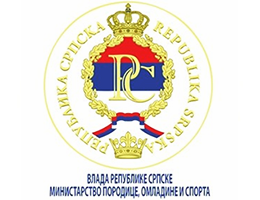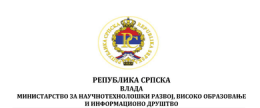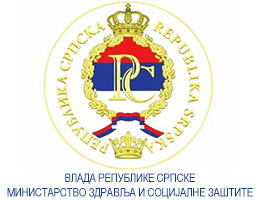Individual and Family Dimensions as Determinants of Volleyball Male and Female Players Emotional Regulation
Volume 3, Issue 1 (2013)
Volume 3, Issue 1 (2013)
Individual and Family Dimensions as Determinants of Volleyball Male and Female Players Emotional Regulation
Abstract:
Abstract: The aim of this research was to examine partial contribution of individual characteristics of both male and female volleyball players and emotional atmosphere in a family in interpreting emotional regulation constructs. 286 examinees, aged 16-17, have taken part in the research (142 male and 144 female cadets). Applied measuring instruments (Emotional regulation and control questionnaire, Parental Behavior Perception Scale, Children’s Perception of Interparental Conflict Scale, Questionnaire of Temperament in Early Adolescence and Pubertal Development Scale). Achieved results have shown that individual characteristics and temperament dimensions are significant determinants of male and female volleyball players’ emotional regulation. Adolescents with intensive self control have minimally manifested negative emotions and their emotions were more efficiently controlled. Dimensions of parental behavior statistically and significantly influenced interpretation of emotional regulation construct, especially one of the male players. Male volleyball players who perceived higher level of mother’s control and father’s rejection predictor variables were less successfull in their emotions control.
Keywords:
emotional regulation, temperament dimensions, pubertal status, parental behavior dimensions, interparental conflict dimensions
Full Text:
References:
- Cole, P.M., Martin, S.E., & Dennis, T.A. (2004): Emotion regulation as a scientific construct: Methodological challenges and directions for child development research. Child Development, Vol. 75, No. 2, 317-333.
- Cummings, E.M., Davies, P.T., & Campbell, S.B. (2000): Developmental psychopathology and family process, theory, research and clinical implications. New York: The Guilford Press.
- Davies, P.T., & Cummings, E.M. (1994): Marital conflict and child adjustment: An emotional security hypothesis. Psychological Bulletin, Vol. 116, 387-411.
- Eisenberg, N., Fabes, R.A., Shepard, S.A., Guthrie, I.K., Murphy, B.C., & Reiser, M. (1999): Parental reactions to children’s negative emotions: Longitudinal relations to quality of children’s social functioning. Child Development, Vol. 70, 513-534.
- Ellis, L.K., & Rothbart, M.K. (2001): Revision of the Early Adolescent Temperament Questionnaire. Poster prezentiran na Biennial Meeting of the Society for Research in Children Development, Minneapolis, Minnesota.
- Gottman, J. M., Katz, L.F., & Hooven, C. (1996): Parental meta-emotion philosophy and the emotional life of families: Theoretical models and preliminary data. Journal of Family Psychology, Vol. 10, 243-268.
- Gross, J.J., & John, O.P. (2003): Individual differences in two emotion regulation processes: Implications for affect, relationships, and well-being. Journal of Personality and Social Psychology, Vol. 85, 348-362.
- Grych, J.H., Seid, M. & Fincham, F.D. (1992): Assessing marital conflict from the child’s perspective: The children’s perception of interparental conflict scale. Child Development, Vol. 63, 558-572.
- Keresteš, G., Brković, I. i Kuterovac Jagodić, G. (2010.), Pubertal maturity measuring in adolescents development researches. Social research, 19 (6): 933-951.
- Kliewer, W., Fearnow, M.D., & Miller, P.A. (1996): Coping socialization in middle childhood: Tests of maternal and paternal influences. Child Development, Vol. 67, 2339-2357.
- Macuka, I. (2007): Parental behavior percpetion scale – validity evaluation. Contemporary psychology, Year. 10, Nb. 2, 179-199.
- Macuka, I. (2012): Personal and family guidelines of younger adolescents emotional regulation. Psychological topics, Year 2, Nb 1, 61-82.
- Morris, A.S., Silk, J.S., Steinberg, L., Sessa, F.M., Avenevoli, S. & Essex, M.J. (2002): Temperament vulnerability and negative parenting as interacting predictors of child adjustment. Journal of Marriage and Family, Vol. 64, 461-471.
- Murris, P. & Ollendick, T.H. (2005): The role of temperament in etiology of child psychopathology. Clinical Child and Family Psychology Review, Vol. 8, No. 4, 271-289.
- Negriff, S., Fung, M.T., & Trickett, P.K. (2008): Self-rated pubertal development, depressive symptoms and delinquency: Measurement issues and moderation by gender and maltreatment. Journal of Youth and Adolescence, Vol. 37, 736-746.
- Petersen, A.C., Crockett, L., Richards, M., & Boxer, A. (1988): A self-report measure of pubertal status: Reliability, validity, and initial norms. Journal of Youth and Adolescence, Vol. 17, 117-133.
- Revelle, W., & Zinbarg, R. (2009): "Coefficients Alpha, Beta, Omega, and the glb: Comments on Sijtsma", Psychometrika, Vol. 74, No. 1, 145–154.
- Rivers, S.E., Brackett, M.A., Kataluk, N.A., & Salovey, P. (2007): Regulating anger and sadness: An exploration of discrete emotions in emotion regulation. Journal of Happiness Studies, Vol. 8, 393-427.
- Suveg, C., & Zeman, J. (2004): Emotion regulation in children with anxiety disorders. Journal of Clinical Child and Adolescent Psychology, Vol. 33, No. 4, 750-759.
- Zeman, J., Penza, S., Shipman, K., & Young, G. (1997): Preschoolers as functionalists: The impact of social context on emotion regulation. Child Study Journal, Vol. 27, 41-67.






